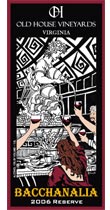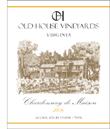Just started and rinsed the world’s fastest pick-up truck and confirmed that I am not back to full mobility. Chores are getting in the way of the leisurely morning.
Went to a great winery yesterday just down the road and the post-attack larder is two cases of wine richer for the trip.
So many chores to so, so many deferred. Next weekend is for the newlyweds back up north, so I won’t be back for a couple weeks, which makes me a bit sad. The summer is over today, last regular season swim Up North.
The whole thing is amazing.
I was going to write a story about the Russians and their crazy dream farm next door, and the labor of love that is boutique agriculture and the wine tasting culture and blueberries, of all things, but that was another of those fevered interludes of reading during the convalescence. The Blueberry Years by Jim Minick was touted as “a mouth-watering and delightful memoir based the trials and tribulations of an organic blueberry farmer.”
When I finished the inspirational book I was convinced that I would never undertake anything like that, and also noted that Mr. Minick got out of the business as well before it killed him.
Old House wines is another of those insanely labor-intensive efforts, just seven miles down the Germana Highway, the very route that General Grant and his 100,000 troops passed on the way to the Wilderness. The story of the winery is the ultimate in the President’s folly of “you did not built it.”
Of course people build things on their own without the assistance of the Federal bureaucracy. The Old House was exactly that on a rainy Mother’s day in 1998 when the current owners discovered the 75 acres and abandoned farm house at the foothills of the Blue Ridge Mountains. By sheer will, they planted and grew and wrested the fruit of the vines from the soil and make some delightful local vintages.
Today, the formerly overgrown alfalfa fields are lush vineyards producing grapes for their award-winning Chardonnay and saucy reds.
Their literature says they ” couldn’t have imagined years ago the amount of labor or fun that would be involved in bringing this venture to life.”
It is back-breaking work, the sort of thing I learned to eschew while working on a cattle ranch in my student days.


(The Old House restored. Photo Old House Winery.)
Here are some interesting facts about the vineyards at Old House:
Vineyards cost about $15,000/acre to plant and establish before harvesting any fruit.
An average of 12 pounds are harvested per vine each fall.
That 12 pounds will make about 1 gallon of wine or 5 bottles.
It costs about $3000 per acre each year to grow the vines including, labor, materials and overhead.
The type of grape is usually used for the name of the wine, ie. Cabernet Franc, Chardonnay, etc.
There are a variety of trellising systems used in the vineyards of Virginia.
We use Vertical Shoot Positioning (VSP), Smart Dyson, and Geneva Double Curtain (GDC). These are used to balance the vine and its energy and expose each part of the vine to sunlight and air.
The electrified fence is used to keep out deer and other large pests.
The electronic bird noises are used to scare away the birds during the ripening period in the vineyard. The birds will eat the grapes before they are ripe enough for wine and leave nothing to harvest.
Grapes like dry summers. The roots are deep and find their own water.
Irrigation is recommended for establishing vines in Virginia and if it is installed, it can be used in dry summers to keep the vines in balance.
Terroir is the French word for soil but in the wine world it refers to the vineyards expression in the wine. That which makes the wine from that vineyard unique. This is expressed over years of working with the grapes and noticing the similarities.
Drainage of the soils in a vineyard is a critical issue. The vine roots need oxygen and cannot survive if constantly under water.
Hard summer storms can damage a vineyard and its crop. The rain runoff can erode topsoil. The winds can damage leaves and fruit clusters. Hail can bruise and destroy a crop. Whole rows have been blown over from the winds at Old House and the vines acting like a sail on a ship.
Frost can destroy the crop for the year and can cause damage to the wood of the vine resulting in a stunting or death. Planking in a higher spot than the surrounding land can give the vine a better change for survival.
Grafting is done on a vine before purchasing. The varietal or scion wood is grafted on to a vine that is good for its roots called rootstock. This is done to ensure healthy vines and vines that are compatible with our soils and pests.
There are many diseases that can develop in the growing season in Virginia. By managing the growth of a vine, using good timing with fungicide sprays and with good weather, the vintner can avoid these diseases and grow healthy grapes.
The varieties at Old House Vineyards are Cabernet Franc, Cabernet Sauvignon, Petit Verdot, Chambourcin, Chardonnay and Vidal.
I have the excellent Bacchanalia red and the white Chardonnay to stave off the Zombie hordes or whatever is going happen after the election and the Iranian nuclear strike on Washington.
Life is good down here on the farm.
Summer is over. Let the games of Fall begin.

Copyright 2012 Vic Socotra
www.vicsocotra.com





